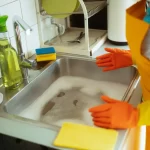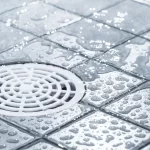Essential Winter Plumbing Prep: Keeping Your Pipes Safe and Functional
As autumn settles in and winter approaches, it’s crucial to prepare your home’s plumbing system for the harsh cold weather ahead. Proper winterization not only ensures the longevity of your plumbing but also prevents costly emergencies. Here’s a comprehensive guide on how to get your plumbing system ready for the winter months.
1. Double-Check Your Water Heater
Your water heater is a critical component of your home’s plumbing system, and its efficiency can be significantly impacted by winter weather. To ensure it’s functioning properly, follow these steps:
Check the Pressure Valve:
- Turn Off Power: For electric water heaters, switch off the power supply at the breaker box. For gas heaters, set the thermostat to the “pilot” position.
- Inspect the Valve: Place a bucket underneath the pressure relief valve. Gently lift the valve’s trip lever. A fully operational valve should release a burst of steam, air, or a small amount of water. This indicates the valve is functioning correctly.
- Troubleshooting: If you don’t observe the expected results, or if you’re uncomfortable performing this check yourself, contact a professional plumber. They can ensure that the pressure valve and the entire water heater are in optimal condition.
2. Preparing Your Plumbing for Extended Absences
If you plan to be away from home for an extended period during the winter, it’s essential to take precautions to prevent plumbing issues:
Turn Off the Water Main:
- Shutoff Procedure: Before you leave, locate and turn off the main water supply valve. This will prevent any water from entering the plumbing system, reducing the risk of leaks or bursts.
Drain the Plumbing System:
- Open Taps: Run all faucets and flush toilets to remove as much water from the pipes as possible. This helps to minimize the risk of freezing and potential damage.
Maintain Temperature:
- Set the Thermostat: Ensure your home’s heating system remains operational and set the thermostat to at least 14°C (57°F). This helps to prevent the interior pipes from freezing, even if the home is unoccupied.
By taking these steps, you can avoid returning to a water-damaged home or dealing with plumbing emergencies upon your return.
3. Inspect and Clean Your Sump Pump
A functioning sump pump is essential for preventing basement flooding, especially during winter when melting snow and ice can lead to increased water levels. Here’s how to prepare your sump pump:
Inspection:
- Schedule a Professional Check: Have your sump pump inspected by a professional if it hasn’t been serviced recently. They will ensure it’s working correctly and address any issues before winter arrives.
Clean the Sump Pit:
- Remove Debris: Ensure the sump pit is clear of debris and any obstructions that could interfere with the pump’s operation. A clean pit helps the pump function efficiently and reduces the risk of malfunction.
Test the Pump:
- Run a Test: Add water to the sump pit to ensure the pump activates and removes the water effectively. Regular testing can help identify potential issues before they become critical.
4. Clean Out Your Eavestroughs
Proper drainage is crucial for preventing ice dams and water damage to your home’s foundation. Here’s how to prepare your eavestroughs for winter:
Clear Debris:
- Remove Leaves and Twigs: Clean out any leaves, twigs, or other debris from your eavestroughs and downspouts. This helps to ensure that water flows freely through the gutters and away from your home.
Check for Blockages:
- Inspect Downspouts: Ensure that downspouts are clear and water can flow easily through them. Blockages can cause water to back up and freeze, leading to ice dams and potential damage.
Professional Help:
- Hire a Service: If you’re uncomfortable climbing ladders or handling eavestrough maintenance yourself, consider hiring a professional eavestrough cleaning service. They have the expertise and equipment to perform a thorough job safely.
5. Additional Winter Plumbing Tips
Pipe Insulation:
- Wrap Pipes: Insulate exposed pipes, especially those in unheated areas such as basements, crawl spaces, and attics. Foam pipe insulation can help prevent freezing and reduce the risk of burst pipes.
Heat Cables:
- Install Heat Tape: For added protection, consider using heat tape or cables on vulnerable pipes. These provide extra warmth and help prevent freezing in extreme conditions.
Monitor Your Plumbing:
- Check for Leaks: Regularly inspect your plumbing system for any signs of leaks or damage. Early detection can prevent larger issues and save on costly repairs.
Emergency Preparedness:
- Know Shutoff Locations: Familiarize yourself with the location of your home’s main water shutoff valve. In case of an emergency, knowing how to quickly turn off the water can minimize damage.
By following these guidelines and preparing your plumbing system for winter, you can ensure that your home remains safe and functional throughout the cold months. If you encounter any issues or require professional assistance, don’t hesitate to contact a licensed plumber for help.
Contact Us:
For more information on winter plumbing preparation or to schedule a professional inspection, call us today at 416-252-5557. We’re here to help you keep your plumbing system in top shape all year round.






